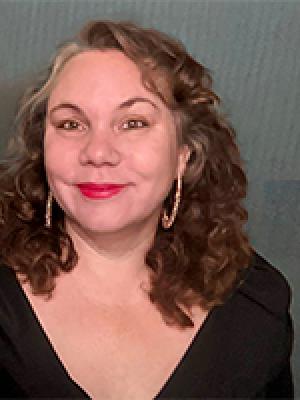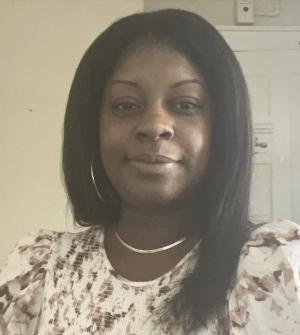Online Program Course Redesign Boosts Student Experience
By Ed Finkel
CTD has offered online programming for the better part of three decades. But the Center recently has redesigned that programming in a number of ways to continue to improve upon the student experience; ensure that asynchronous content is delivered in a way that aligns with students’ schedules, learning preferences and ultimate goals; and reflects current talent development research.
For starters, the online program redesign process has broadened the focus beyond course content to lean into Northwestern’s university-wide goal of producing “transformational leadership,” says Rebecca Vonesh, coordinator of online programs. This leads to more real-world applications, discussion and discourse, explicit teaching of project management skills, and a stronger focus on how students can best advocate for their own learning needs, she says.
 Becoming a transformational leader starts with a solid understanding of the conceptual knowledge of a topic, but it goes beyond that, Vonesh explains. “Our instructors are both designers and instructional coaches,” she says. “Our instructors build their own classes. They use lots of authenticated and credible sources. They often have a textbook. But the way that they map in their voice, throughout the course, is unique and special to our settings.”
Becoming a transformational leader starts with a solid understanding of the conceptual knowledge of a topic, but it goes beyond that, Vonesh explains. “Our instructors are both designers and instructional coaches,” she says. “Our instructors build their own classes. They use lots of authenticated and credible sources. They often have a textbook. But the way that they map in their voice, throughout the course, is unique and special to our settings.”
Transformational leaders are characterized by traits like the abilities to apply thinking processes across multiple settings, to manage their own workflow, and to understand and advocate multiple perspectives—all traits that CTD courses are aimed to build, Vonesh says.
“Those skills begin with you becoming the owner of your own learning,” she says. Students are immediately asked to look over the syllabus, and then pull up and map assignments and other key mileposts to their often very busy activity calendars. “By asking them to create their own work plans, they begin to conceptualize how to complete big tasks, and how to use the flexibility and that freedom given inside of an asynchronous space.” These self-efficacy and planning skills are also critical to talent development, which is the foundation of CTD’s work.
With students from more than 40 countries, online discussion boards become a place for them to develop their ability to see and articulate multiple perspectives, Vonesh says. “They can learn how to position themselves inside of a community that has a whole wide range of voices,” she says. “There is discourse, and debate, and disagreement. How do we have that disagreement and that intellectual curiosity to push things further, in a way that’s professional, and that is really recognizing the unique contributions of each of those different voices?”
Secondly, the redesign effort centers around building both student identity and community, Vonesh says. “We help students ‘try on’ professional identities by calling them by that identity,” such as an instructor addressing a class by saying, “Hello, mathematicians,” rather than simply as students, she says. “We explicitly teach the tools, vernacular, thinking processes and ethical codes of our target field. We focus on building community and interaction throughout the course, where students from around the country and the world can think together about topics related to the domain. And see how they can become change-makers.”
A third critical component of the redesign has focused on moving toward a more accessible design. “Students should only have to learn how to learn once,” Vonesh says. Accessible design means having a consistent hierarchies and formatting for directions; leading students through the content with visuals that clarify meaning; and also having a consistent learning cycle to ensure content is covered deeply and meaningfully, in a format where teachers can provide content-focused “mini-lessons,” she says.
 Beyond these course-level changes, Rashida Clark, assistant coordinator of online programs, notes that CTD will be adding a bevy of new courses over the next year, marked with “new course” badges that students can “collect” to track the trajectories of their academic pathways, and instructors will be significantly revising the curricula of many existing courses.
Beyond these course-level changes, Rashida Clark, assistant coordinator of online programs, notes that CTD will be adding a bevy of new courses over the next year, marked with “new course” badges that students can “collect” to track the trajectories of their academic pathways, and instructors will be significantly revising the curricula of many existing courses.
To ensure that students stay on track and stay engaged in an asynchronous environment, CTD asks that instructors send out an introductory e-mail, weekly e-mails with reminders about assignments as well as blogs, articles or videos that relate to that week’s learnings, and otherwise engage students to make sure they are checking in, Clark says. Instructors log in at least four times per week and respond to student inquiries in 24 to 48 hours, spending about five hours per week doing so.
The instructors also provide office hours on Zoom, as well as monitoring and steering the discussion boards. “Engaging students in meaningful conversations, asking more questions, giving great feedback, so that there’s this continuous response,” she says. Instructors hold a minimum of two live meetings per semester, provide many of their lessons by video, and are asked to grade all assignments within two weeks—although they typically take far less time, she adds.
The asynchronous model enables students to engage at various times in different time zones around the world and allows them to set their own pace, Clark says. “Instructors love that they get to teach students in Europe, Asia, Africa, anywhere in the world —different islands within the Atlantic Ocean—or here in the United States,” she says. “It’s a great way for students, as well, to work with others, and learn about students from other countries, cultures and ethnicities.”
Instructor feedback is very personalized, providing an extra layer of instruction, while students can upload their own unique ideas in many ways, from videos to voice recordings, as they develop their time management skills, Clark says. As compared to traditional classroom learning, “There’s lots more student inquiry and questioning through those discussion boards, giving them various opportunities to choose how it is they’re learning,” Clark says. “That online discourse allows students to take the time to craft what they’d like to say, as far as sharing their ideas, and how it is they respond to their peers.”
The bottom-line goal of the ongoing work is tied into continuous improvement in how CTD serves its student population and other audiences, Clark says. “We always aim to improve what it is we’re doing,” she says. “We’re always reviewing our curriculum, and analyzing how students learn, and what’s the best way to engage them when it comes to different subjects. I think our goal is, we want to just redevelop how it is we are teaching our students.”
Online programs are now enrolling for Fall 2024. To learn more and register, please visit the online programs page.

